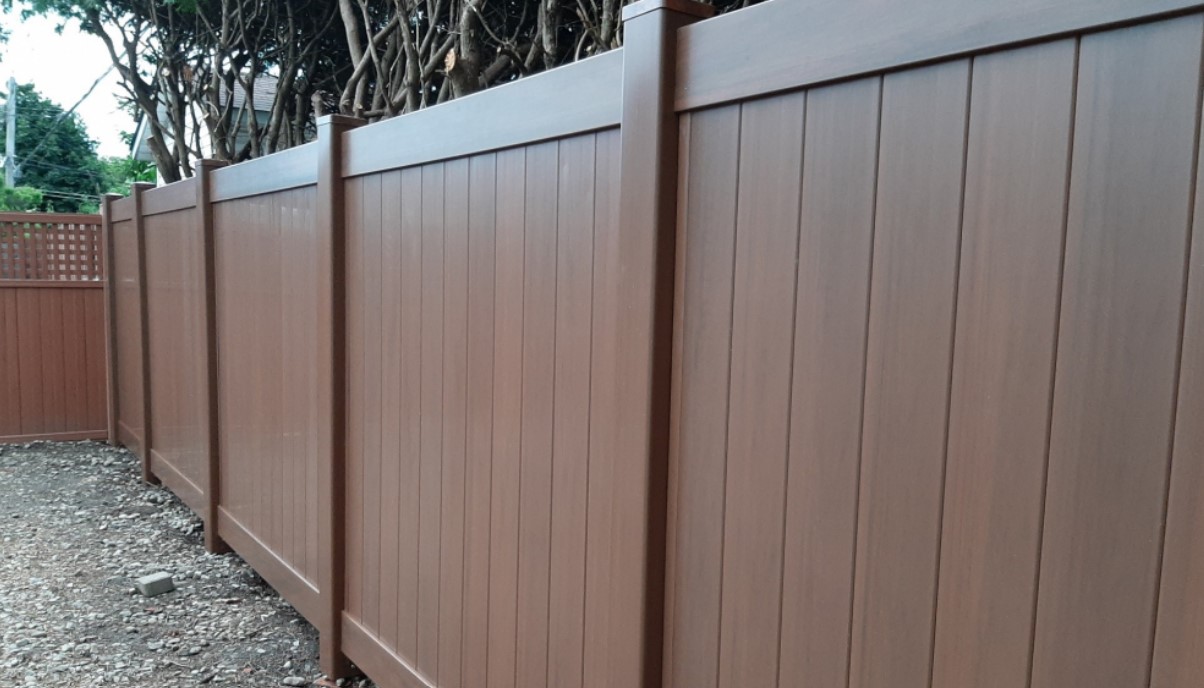If you’re thinking about constructing a fence around your yard, you might be wondering, “How does wood compare to vinyl fencing?” Both options are durable and long-lasting, but there are some drawbacks to both materials. Vinyl is stronger and can withstand harsh weather and other elements, while wood is much more susceptible to decay, fungus, and pests. While wood can last up to 20 years, it will eventually break down and need to be replaced. The durability of wood will depend on the species used. Some species are stronger than others, and some are naturally resistant to decay.
Read on for more information, and consult a local fencing professional for a more in-depth consultation
Wood fences are more susceptible to moisture damage
Proper care of a wood fence will keep it from rotting and mold. If water is allowed to accumulate on the wood, it will eventually rot and mold. Water can also cause pests and insects to invade the fence. Regular sealing with an oil-based sealant can prevent water stains and penetration. Wood fences should be stain-treated at least every three years to maintain their natural beauty.
Regardless of its materials, wood is more likely to be damaged by moisture. While you may be able to prevent water issues, moisture damage starts in the wood’s pores, which is why it’s most vulnerable to damage. This type of damage can affect the upright posts and the bottom portion of wood fence posts. If you notice these areas rotting, you should immediately address it. Moisture can also affect boards, rails, and gates. It can also cause rust on the hinges of gates.
Wood needs to be treated
Pressure-treated wood and vinyl fences will last longer than their unstained counterparts. Wood fences may need a preservative sealant to keep them from rotting. Vinyl fencing is durable and requires minimal maintenance. Wooden fences should be treated every five to seven years to keep them looking their best. Cedar fences require re-staining after several years. Pressure-treated wood is easy to work with and is relatively inexpensive, according to most fence builders.
Pressure-treated pine is the most common type of wood used for fence panels and posts. The Environmental Protection Agency (EPA) has banned chromated copper arsenate from outdoor projects. Micronized Copper Azole (MCA) contains micronized copper and biocides that reduce the risk of copper leaching. Pressure-treated wood fences can last for up to 20 years, but the posts may not last as long.
Wood requires re-staining
Among the advantages of vinyl is it is mostly maintenance-free. Re-staining wooden fences can be an ongoing project, and it’s often necessary to apply a new coat at least once a year. Here are a few methods to stain your fence. The first method is to paint the slats of your fence. Apply the stain using a paintbrush. Try to make the paintbrush as wide as the slats, and be sure to brush the horizontal and vertical slats using the same technique.
First, staining a wooden fence is less complicated than painting it. The color changes slowly but isn’t as noticeable as painting. Another benefit of staining is the way it highlights the wood’s natural features. While there are fewer color choices available with stains, many homeowners prefer the look of a wood fence that’s already natural. Re-staining also doesn’t peel or flake, unlike paint.
Wood is harder to repair
While it is possible to repair wooden fences yourself, there are a few different problems that may require the assistance of a professional. A leaking or cracked fence panel can be easily repaired with wood putty and a fresh coat of paint. Broken boards can be replaced and painted again to match the rest of the fence. Metal fences are more difficult to repair, and you will have to use specialized tools. If you’re able to repair your wooden fence yourself, you may consider repainting it.
Damage caused by insects is another major problem with wood fences. Sawdust is a by-product of the burrowing process of insects. This sawdust is most often left in holes in pickets and posts. Depending on the type of insect, remediation will vary. A hole filler is an effective solution for filling these holes, but the right product depends on the type of insect. To solve the problem, visit your local hardware or home improvement store. The employees there will be able to help you determine what you need.
Wood is more expensive over time
There are a few key differences between wood and vinyl fencing. While both materials are expensive to purchase and install, wood will require a lot more maintenance and is more expensive over time. However, wood does have its advantages, such as its classic, traditional look. Wood is a great choice for many homeowners because of its natural beauty and low-maintenance requirements, but it must compete with modern technology and advancements in vinyl fencing to stay relevant.
While wood is more expensive to buy, it can last for decades. While vinyl is not as durable as wood, it will not bend or become pale over time. Wood is also prone to decay and warping, so if you plan on putting a fence up for many years, you will need to replace it sooner. It can also be expensive to repair. However, vinyl fences are more affordable. If you are concerned about maintenance, vinyl is a better option.

Gabrielle enjoys writing, exercising, traveling, and meeting new people. She also has a passion for romance novels and smooth lattes.
